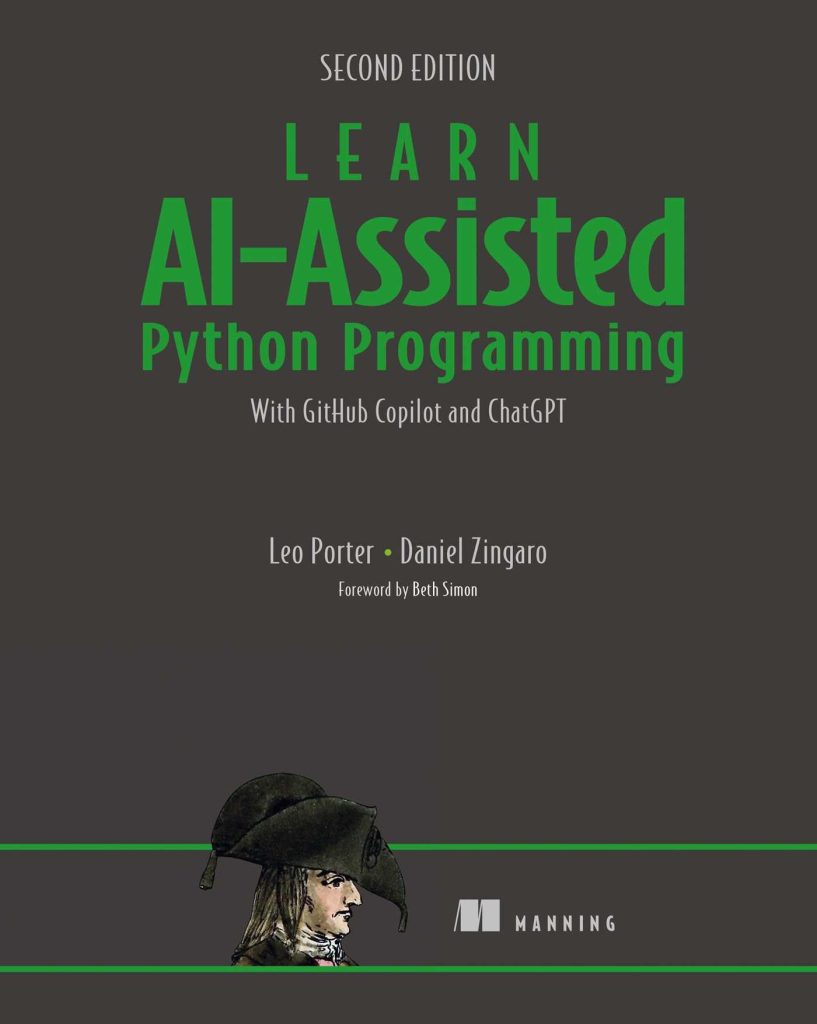
Banded matrices are a special type of sparse matrix where the non-zero elements are confined to a diagonal band, encompassing the main diagonal and zero or more diagonals on either side. This structure is common in many scientific and engineering applications, particularly in the solution of differential equations where the matrix represents a discretized operator on a grid.
For instance, a tridiagonal matrix is a type of banded matrix with non-zero elements on the main diagonal, the diagonal above, and the diagonal below the main diagonal. Imagine a matrix with only three non-zero diagonals, where all other elements are zero. This matrix would look like:
[[a11, a12, 0, 0, ...], [a21, a22, a23, 0, ...], [ 0, a32, a33, a34, ...], ... [ 0, 0, ..., an,n-1, an,n]]
In Python, banded matrices can be represented by a two-dimensional array where the first index corresponds to the diagonal and the second index to the elements along that diagonal. The main diagonal is indexed as 0, diagonals above the main diagonal have positive indices, and diagonals below have negative indices. For example, a tridiagonal matrix would be represented as follows:
# Main diagonal [... a11, a22, a33, ..., ann ...] # Diagonal above main [... a12, a23, a34, ..., a(n-1)n ...] # Diagonal below main [... a21, a32, a43, ..., an,n-1 ...]
This compact representation is efficient for both storage and computation. It enables algorithms to take advantage of the banded structure to perform operations more quickly than would be possible with a full matrix.
Understanding the structure of banded matrices very important when working with linear algebra routines in scientific computing libraries such as scipy. It allows us to use specialized functions that can solve linear equations involving banded matrices more efficiently than general-purpose solvers.
Using scipy.linalg.solve_banded Function
One such function in the scipy library is scipy.linalg.solve_banded. This function is specifically designed to solve linear systems of equations where the coefficient matrix is banded. It uses efficient algorithms that take advantage of the banded structure to reduce computational time and memory usage.
To use scipy.linalg.solve_banded, you need to understand its parameters:
- A tuple representing the number of non-zero lower and upper diagonals. For a tridiagonal matrix, this would be (1, 1).
- The banded matrix with dimensions (l+u+1, M), where M is the number of columns of the original matrix. The rows of
abrepresent diagonals of the original matrix, arranged from top-left to bottom-right. - The right-hand side matrix of the equation. It can be either a one-dimensional array or a two-dimensional array for systems with multiple right-hand sides.
Here is an example of how to use scipy.linalg.solve_banded to solve a tridiagonal system:
import numpy as np
from scipy.linalg import solve_banded
# Define the number of lower and upper diagonals
l_and_u = (1, 1)
# Define the banded matrix 'ab'
# For a tridiagonal matrix, 'ab' has three rows
# First row: upper diagonal (with a zero in the first position)
# Second row: main diagonal
# Third row: lower diagonal (with a zero in the last position)
ab = np.array([[0, a12, a23, a34, ..., a(n-1)n],
[a11, a22, a33, a44, ..., ann],
[a21, a32, a43, ..., an,n-1, 0]])
# Define the right-hand side 'b'
b = np.array([b1, b2, b3, ..., bn])
# Solve the system
x = solve_banded(l_and_u, ab, b)
# 'x' is the solution array
print(x)
The solve_banded function returns the solution vector x for the system Ab = x. It’s important to note that the banded matrix ab must be constructed correctly, with the diagonals aligned as specified in the documentation. Failure to do so will result in incorrect solutions.
By using scipy.linalg.solve_banded, you can solve systems involving banded matrices much faster than using a general solver. That’s especially beneficial for large systems where the performance gains can be significant.
Solving Banded Matrix Equations
When working with banded matrices, it is often the case that the system of equations to be solved is quite large. That is particularly true in fields like computational physics or engineering where systems may consist of thousands of equations. The scipy.linalg.solve_banded function is well-suited for these large systems due to its efficient use of memory and computation.
As an example, ponder a large system of equations derived from a discretized partial differential equation where the coefficient matrix is pentadiagonal, meaning that there are two diagonals above and two below the main diagonal. Here’s how you could represent and solve such a system:
import numpy as np
from scipy.linalg import solve_banded
# Define the number of lower and upper diagonals for a pentadiagonal matrix
l_and_u = (2, 2)
# Define the pentadiagonal banded matrix 'ab'
# For a pentadiagonal matrix, 'ab' has five rows
# Rows: 2 upper diagonals, main diagonal, 2 lower diagonals
ab = np.array([[0, 0, a13, a24, ..., a(n-2)n],
[0, a12, a23, a34, ..., a(n-1)n],
[a11, a22, a33, a44, ..., ann],
[a21, a32, a43, ..., an,n-1, 0],
[a31, a42, ..., an,n-2, 0, 0]])
# Define the right-hand side 'b'
b = np.array([b1, b2, b3, ..., bn])
# Solve the system
x = solve_banded(l_and_u, ab, b)
print(x)
When using solve_banded, it is important to remember that the input matrix ab should only contain the non-zero diagonals, and the size of ab should be (number of non-zero diagonals, number of columns) in the original matrix. Also, the zero padding is used to align the diagonals properly within the array. For example, if there is no upper diagonal above the first element of the main diagonal, the first element of the first row in ab will be zero.
Furthermore, the right-hand side b can be a multi-dimensional array if you’re solving multiple systems with the same coefficient matrix but different right-hand sides. This makes solve_banded even more efficient as it can solve multiple systems at the same time.
Finally, while scipy.linalg.solve_banded is optimized for banded matrices, it is still important to ensure that the rest of your code is efficient to not bottleneck the performance gains achieved by this function. This includes efficient construction of the banded matrix and the right-hand side as well as any pre or post-processing steps required for your specific application.
Example Applications of solve_banded
One practical application of scipy.linalg.solve_banded is in the field of computational finance, where the pricing of financial derivatives often leads to the need to solve large systems of linear equations. For instance, when valuing an American option using the Crank-Nicolson finite difference method, the resulting matrix equation is tridiagonal and can be efficiently solved using solve_banded.
# Assume 'P' is the matrix from the Crank-Nicolson method
# and 'V' is the vector representing option prices at the current time step
# l_and_u for a tridiagonal matrix is (1, 1)
l_and_u = (1, 1)
# Construct the 'ab' matrix
ab = np.array([[0]+list(np.diag(P, k=1)), # upper diagonal
list(np.diag(P)), # main diagonal
list(np.diag(P, k=-1))+[0]]) # lower diagonal
# Solve the equation Pv = V for the next time step's option prices 'v'
v = solve_banded(l_and_u, ab, V)
In another scenario, ponder a structural engineering problem where one needs to solve for displacements in a beam under load. The stiffness matrix for such a system, when using finite element methods, often turns out to be banded. For a problem with a heptadiagonal stiffness matrix, the system could be solved as follows:
# Define the number of lower and upper diagonals for a heptadiagonal matrix
l_and_u = (3, 3)
# 'ab' matrix representation of the heptadiagonal stiffness matrix
ab = np.array([[0, 0, 0, a14, ..., a(n-3)n],
[0, 0, a13, a24, ..., a(n-2)n],
[0, a12, a23, a34, ..., a(n-1)n],
[a11, a22, a33, a44, ..., ann],
[a21, a32, a43, ..., an,n-1, 0],
[a31, a42, ..., an,n-2, 0, 0],
[a41, ..., an,n-3, 0, 0, 0]])
# 'b' is the load vector
b = np.array([f1, f2, f3, ..., fn])
# Solve the system for displacements 'd'
d = solve_banded(l_and_u, ab, b)
print(d)
And, in the realm of fluid dynamics, the Navier-Stokes equations can also lead to banded matrix systems when discretized. Solving for the velocity and pressure fields in a fluid can be efficiently handled with solve_banded, particularly for iterative solvers where the banded structure remains consistent across iterations.
In summary, scipy.linalg.solve_banded is a powerful function that can be applied to various problems across different domains. It’s especially valuable when dealing with large systems where the banded structure of the matrix can be leveraged to achieve significant computational efficiency. Whether you are computing option prices, evaluating structural displacements, or simulating fluid flows, solve_banded can be the optimal choice for solving banded matrix equations.
Performance Considerations and Best Practices
When it comes to performance considerations and best practices when using scipy.linalg.solve_banded, there are several key points to keep in mind. Firstly, it especially important to ensure that the input banded matrix is correctly formatted. Incorrect alignment of the diagonals will result in erroneous solutions. For instance, in a tridiagonal matrix, the length of the upper diagonal should be one less than the main diagonal, and the length of the lower diagonal should be one less than the main diagonal as well.
Another important aspect is the management of memory. Banded matrices are advantageous because they require less memory than full matrices. It’s, therefore, necessary to avoid converting banded matrices into full matrices, as this will negate the memory benefits. The following example demonstrates how to create a banded matrix without unnecessary memory usage:
# Incorrect approach - converting full matrix to banded matrix full_matrix = np.zeros((n, n)) # Filling in the full matrix ... # Converting to banded matrix ab = np.array([np.diag(full_matrix, k) for k in range(upper_diagonals, -lower_diagonals-1, -1)]) # Correct approach - directly creating banded matrix ab = np.zeros((upper_diagonals + lower_diagonals + 1, n)) # Filling in the banded matrix directly ...
Moreover, when solve_banded is used in iterative algorithms, it is often unnecessary to recreate the banded matrix in every iteration if the matrix does not change. Instead, create it once and reuse it, which will save both time and resources:
# Create the banded matrix 'ab' outside of the iterative loop
ab = ...
for iteration in range(number_of_iterations):
# Use the existing 'ab' in the solve_banded function
x = solve_banded(l_and_u, ab, b)
...
Finally, it is also recommended to take advantage of vectorization when working with solve_banded. If you have multiple right-hand sides that you wish to solve for with the same coefficient matrix, it’s more efficient to solve them all simultaneously rather than looping over individual solves. That’s done by passing a two-dimensional array for the right-hand side ‘b’ parameter:
# Solving multiple systems with the same coefficient matrix # 'B' is a two-dimensional array where each column is a right-hand side vector B = np.array([...]) x = solve_banded(l_and_u, ab, B)
To wrap it up, to make the most out of scipy.linalg.solve_banded, it’s imperative to correctly format the input banded matrix, manage memory efficiently, avoid unnecessary computations, and use vectorization where possible. By adhering to these best practices, you can ensure that your code runs as fast and efficiently as possible.
Source: https://www.pythonlore.com/solving-banded-matrix-equations-with-scipy-linalg-solve_banded/




